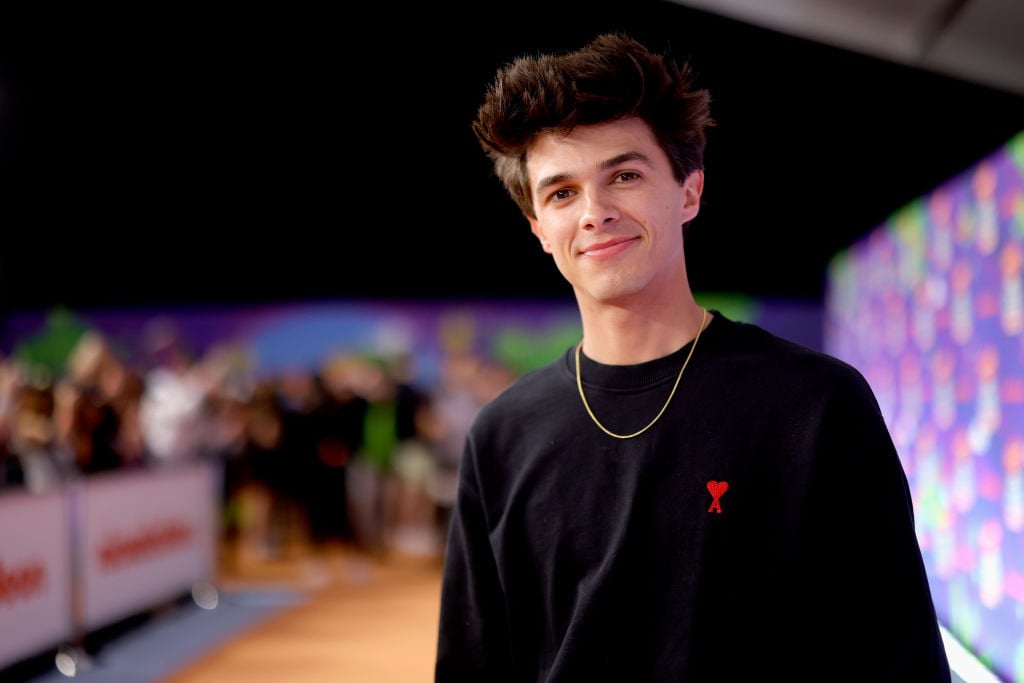Brent Riveras Business Strategy: Framing a Creator as an Economic Actor
The rise of digital creators has transformed modern media markets. Among these creators, Brent Rivera stands out as a case study in how a social media personality can be understood as a small, agile business. This article explores the business strategy of Brent Rivera, drawing lessons from his evolution as a content entrepreneur and unpacking the broader implications of a social media magnates playbook. We will examine revenue models, audience economics, operational tactics, and the macroeconomic context of the creator economy.
Profile and Market Context: The Creator as Firm
Treating an influencer like Brent Rivera as a firm allows us to apply standard economic tools: revenue diversification, cost structure analysis, investment in brand equity, and network effects. Over the past decade, the creator economy has expanded from a niche to a multibillion-dollar market, enabling individual creators to capture value previously reserved for traditional studios and broadcasters.
Key characteristics of the modern creator-firm
- Low marginal cost of content distribution once a piece of content is produced.
- High fixed costs in attention: time, talent, production setup, and audience acquisition.
- Network effects: cross-platform presence amplifies visibility and monetization options.
- Intangible assets: personal brand, trust, and audience loyalty are primary forms of capital.
Revenue Streams and Monetization: Multiple Channels, Multiple Margins
A central tenet of Brent Riveras business strategy is diversification. Rather than relying purely on platform ad revenue, successful creators layer multiple income streams to smooth volatility and increase lifetime value per follower.
Common revenue channels for top creators (illustrative)
| Revenue Stream | Typical Margin | Notes / Characteristics |
|---|---|---|
| Sponsorships & Brand Deals | 60%–85% | Often the single largest line; price varies by follower size, engagement rate, and exclusivity. |
| Ad Revenue (Platform) | 30%–60% | Includes YouTube ad splits, TikTok creatives funds; revenue fluctuates with CPMs and watch time. |
| Merchandise & Product | 25%–70% | Higher margin if vertically integrated; subject to inventory and fulfilment costs. |
| Affiliate & Direct Sales | 20%–50% | Commission-based; conversion-sensitive to authenticity and recommendation quality. |
| Appearances & Traditional Media | Variable | Acting, hosting, or guest spots; useful for cross-portfolio branding and reach. |
By constructing a portfolio of these channels, the creator can exploit economies of scope — leveraging content and audience access for multiple monetization opportunities simultaneously.
Audience Economics: Monetizing Attention and Trust
For a creator-firm like Brent Rivera, the audience is the primary asset. Understanding audience composition and monetization elasticities is central to strategy.
Audience segmentation and value
- Core fans: high engagement, high willingness-to-pay (merch, subscriptions, live gifting).
- Casual viewers: responsive to ads and one-off brand partnerships.
- Cross-platform followers: drive network effects; used as a hedge if one platforms algorithm changes.
Typical engagement benchmarks offer context for valuations used by marketers. The following table provides industry-level indicators (approximate, illustrative).
| Platform | Average Engagement Rate | Estimated CPM (USD) | Typical Conversion Rate (to purchase) |
|---|---|---|---|
| YouTube | 1%–3% | $2–$15 | 0.5%–2% |
| TikTok | 1%–8% (higher for short-form) | $1–$10 | 0.5%–3% |
| 0.5%–3% | $5–$25 | 1%–4% |
Interpreting these numbers, creators aiming to maximize revenue must balance reach (CPM-driven) with conversion (affiliate/product-driven). A creator like Brent Rivera builds content designed to support both high CPM placements and authentic product pitches, increasing overall monetization per follower.
Strategic Playbook: Tactics from Brent Riveras Growth Trajectory
Variants of the phrase Brent Riveras Business Strategy: Lessons from a Social Media Magnate can be distilled into a pragmatic playbook. Below are recurring strategic themes common to top creators and reflected in Brent Riveras commercial behavior.
1. Platform diversification and risk management
Reliance on a single platform exposes creators to algorithmic risk. Cross-posting, repurposing, and native content tailored to each platform reduce exposure and capture multiple monetization streams simultaneously.
2. Productization of the brand
Turning attention into products (merchandise, collaborations, digital goods) is central to extracting surplus value from an audience. This step transforms ephemeral attention into a tangible revenue base.
3. Collaborations and network effects
Strategic collaborations — with other creators, brands, and traditional media — produce audience spillovers and compound visibility. The economics are simple: marginal cost of an extra collaboration is low relative to incremental reach.
4. Data-driven creative decisions
Using engagement metrics, watch time, demographic breakdowns, and conversion data allows creators to optimize content for monetization rather than just virality. This shifts the objective from maximum eyeballs to maximum economic return per piece of content.
Operational Tactics and Analytics: Running a Creator Business
Operationalizing these strategic choices requires systems. As a creator grows, the role of the founder shifts from content production to management of a small firm: talent, legal, finance, and operations.
- Outsourcing non-core tasks: editing, admin, and order fulfilment scale better when delegated.
- Investment in production quality: raises CPM and brand desirability for partnerships.
- Legal and IP management: contracts, trademarks on brand elements, and licensing deals protect long-term value.
Metrics that matter
- Lifetime value per follower (LTV) — revenue expected over the relationship.
- Acquisition cost per follower (ACF) — promotional spend divided by new followers.
- Engagement-to-purchase conversion — how many engaged viewers convert into buyers.
- Gross margin by product line — to prioritize high-margin initiatives.
Partnerships, Intellectual Property, and Brand Extensions
One way a creator transforms short-term attention into durable economic value is by creating intellectual property (IP). This can be formalized through product lines, show formats, or branded entertainment that can be licensed.
- Licensing deals allow creators to earn royalties and minimize capital outlay for manufacturing or distribution.
- Strategic brand partnerships — co-designed products or capsule collections — can generate both immediate revenue and brand-building effects.
- Content franchises — recurring series or characters — raise the expected future cash flow and attract more stable brand partners.
Economic Data: Industry Context and Benchmarks
To evaluate any one creators strategy, its helpful to view it within industry benchmarks. The influencer marketing market and related creator monetization channels have shown rapid growth, but also variability:
| Indicator | Estimated Value / Trend | Implication for Creators |
|---|---|---|
| Global influencer marketing spend | Estimated in the tens of billions USD annually (growing) | Large addressable market, but competition has raised CPMs and deal complexity. |
| Brand deal average fees (mid-to-large creators) | Ranges from thousands to hundreds of thousands USD per campaign | Revenue potential scales with engagement quality, not just follower count. |
| Merch conversion rate | Typically low single-digits, but high repeatability | Merch can produce a stable recurring income if community-driven. |
Monetization Mix: An Illustrative Revenue Model
Below is an illustrative distribution of revenue streams for a scaled creator (percentages are hypothetical and used to explain trade-offs).
| Revenue Category | Illustrative Share (%) | Notes |
|---|---|---|
| Sponsorships & Brand Collaborations | 40% | High-margin and predictable if long-term partners exist. |
| Platform Ad Revenue | 20% | Variable with CPM swings and algorithmic changes. |
| Merchandise & Products | 20% | Requires fulfilment and marketing but builds brand equity. |
| Appearances, Acting, & Licensing | 10% | Higher-ticket but less frequent. |
| Affiliate & Other | 10% | Small but scalable with the right funnels. |
Lessons from Brent Rivera: Transferable Principles
Taking inspiration from Brent Riveras journey — the emphasis on content, cross-platform presence, and multiple monetization pipes — we derive several transferable principles for creators and entrepreneurs:
- Brand first, platform second: invest in a personal brand that can be ported across channels and monetized independently of a single algorithm.
- De-risk via diversification: multiple income streams reduce revenue volatility and increase bargaining power with brands.
- Invest in quality and team: scaling requires delegation and professionalization to sustain growth.
- Data-informed creativity: use analytics to guide experimentation while protecting the authenticity that drives conversion.
- Leverage collaborations: structured partnerships create exponential reach and credibility transfers between audiences.
Strategic Risks and Market Headwinds
Even a well-diversified creator operation faces macro risks: changes in platform policies, brand appetite shifts, and broader economic cycles that reduce ad spend. A robust strategy anticipates these risks and builds buffers — such as cash reserves, long-term brand contracts, and owned distribution channels (email, apps, direct-to-consumer stores).
Risk management tactics
- Contractual safeguards with brands to lock in rates or exclusivity where appropriate.
- Building owned audiences (email lists, membership platforms) to reduce platform dependence.
- Hedging through multiple content formats — short-form, long-form, live — to adapt to consumption shifts.
From Creator to Entrepreneur: Scaling the Business
The transition from solo creator to an entrepreneur who oversees teams and multiple product lines is an inflection point. It requires a shift in skills: hiring, financial controls, brand partnerships, and legal infrastructure. This is where the intangible brand equity cultivated through consistent content turns into a more traditional enterprise with tangible assets and predictable cash flows.
By reframing Brent Riveras approach as a replicable strategic model — captured in variations such as Brent Riveras Business Strategy: Lessons from a Social Media Magnate, Lessons from Brent Rivera’s growth playbook, and the social media magnates strategic playbook — entrepreneurs and policymakers can better understand how value is created and captured in the creator economy.
This perspective also highlights the economic potential of investing in creator skills, infrastructure, and legal frameworks that allow creators to preserve value and scale sustainably.



